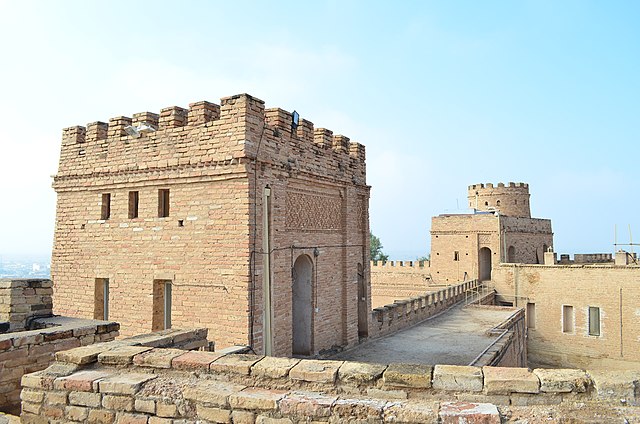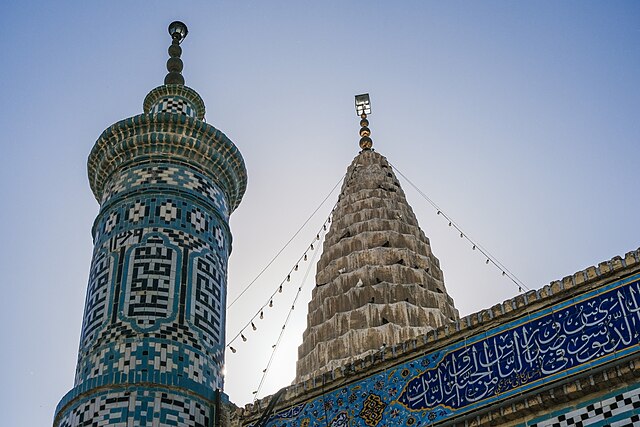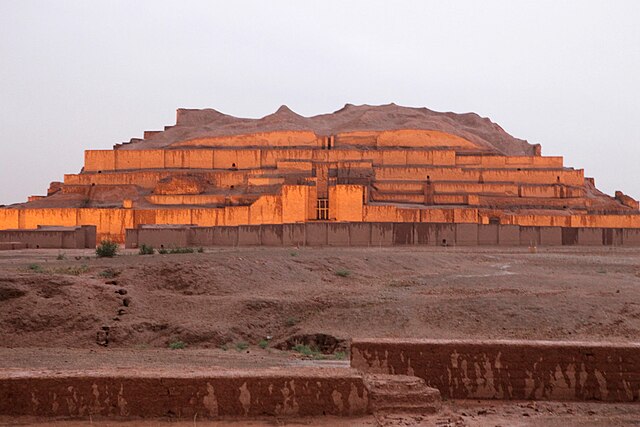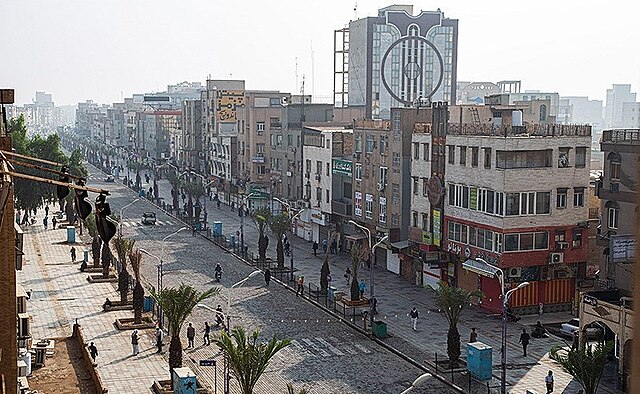Chogha Zanbil is an ancient Elamite complex in the Khuzestan province of Iran. It is one of the few existing ziggurats outside Mesopotamia. It lies approximately 30 km (19 mi) southeast of Susa and 80 km (50 mi) north of Ahvaz. The construction date of the city is unclear due to uncertainty in the chronology of the reign of Untash-Napirisha but is clearly sometime in the 14th or 13th century BC. The conventionally assumed date is 1250 BC. The city is currently believed to have been destroyed by the Neo-Assyrian ruler Assurbanipal in about 645 BC, along with the Elamite capital of Susa though some researchers place the end of occupation in the late 12th century BC. The ziggurat is considered to be the best preserved example of the stepped pyramidal monument by UNESCO. In 1979, Chogha Zanbil became the first Iranian site to be inscribed on the UNESCO World Heritage List.
Chogha Zanbil
Chogha Zanbil Ziggurat (model)
Axe bearing the name of the king Untash-Napirisha.
Bull with elamite inscription - Late 2nd millen BC - National museum of Iran - inventory number 3213
Khuzestan province is one of the 31 provinces of Iran. Located in the southwest of the country, the province borders Iraq and the Persian Gulf. Its capital is Ahvaz and it covers an area of 63,238 square kilometres (24,416 sq mi). Since 2014, it has been part of Iran's Region 4.
Image: Shush Castle Darafsh (25)
Image: Khuzestan DSCF6822 1778 (53261757899)
Image: Choqa Zanbil 2
Image: 1399090215061015221661584 دومین روز اعمال محدودیت ها در اهواز








